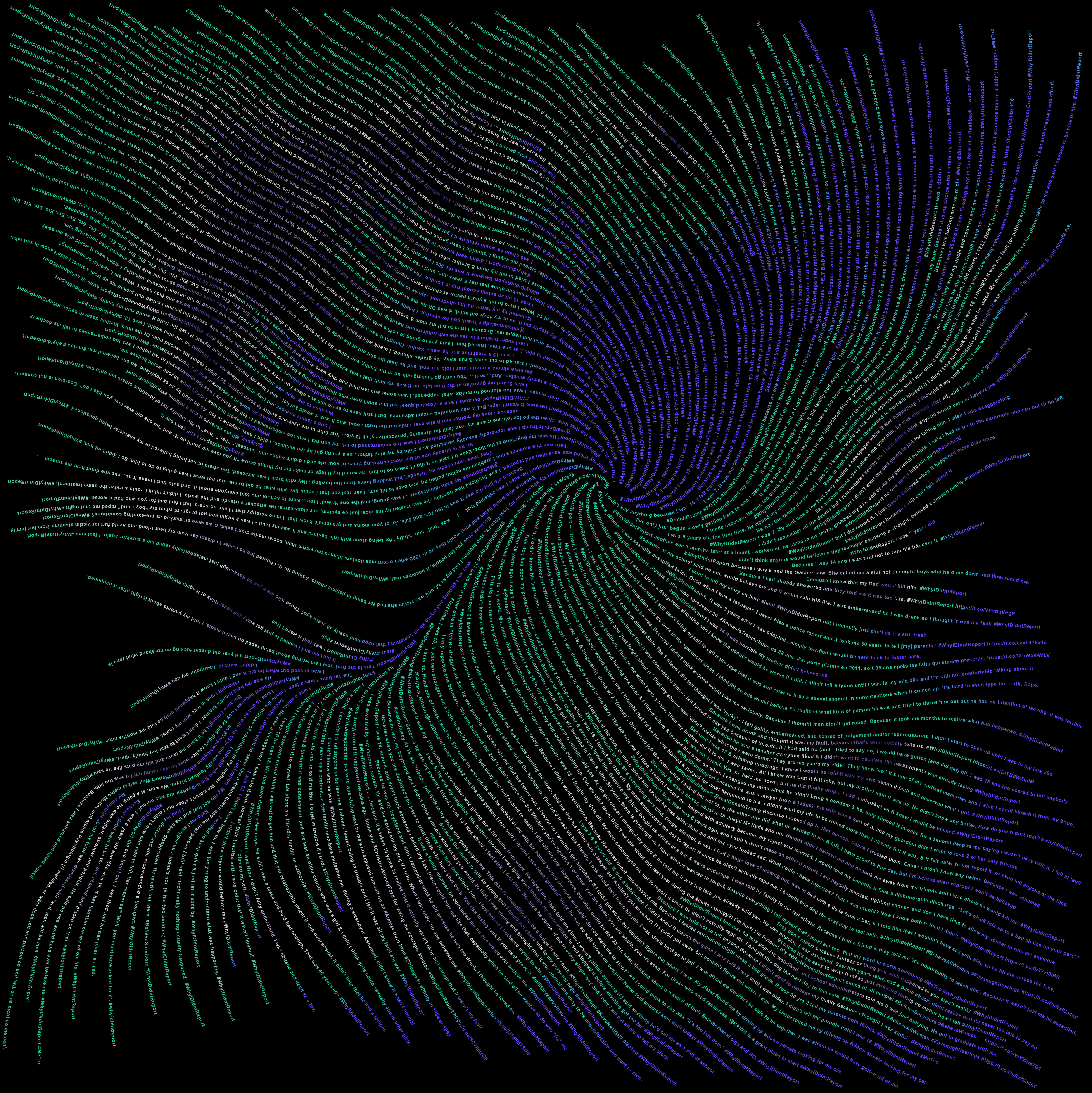#MeToo Anti-Network
Cosmologists say that most of the universe is structured by antimatter. We postulate that social media is similarly structured by effects of the unobserved discourse and experience.- Time
- –
- Location
- online

From a random selection of one million #MeToo tweets, we read through all examples with more than 100 retweets. Only 8 out of the 894 tweets are actual tweets about sexual assault or experiences around the topic of #MeToo. Of the rest, the vast majority are news media posts and political (trolling) discussions, most of them neglecting the specific issues and survivor voices at the heart of the MeToo movement.
The measurements of “success” in networked social media do not render visible the actual importance of #MeToo or the broader phenomenon of structural sexual violence. In crucial ways, the structure of #MeToo is not a network. If we insist on mapping #MeToo as a network – the all-encompassing symbol of digital society – we risk missing fundamental elements of the movement that don’t answer to the network analogy. The arbitrary and heavily mediated frame of the 280-character tweet, and Twitter’s “rich- get- richer” network effects, amplify some voices at the expense of others. Mainstream white media are central while ethnic media are minor. White women celebrities are central while Black and Indigenous advocates are marginalized. Since Tarana Burke founded the movement in 2006, its goal has been to break the silence around sexual violence and uplift the voices of survivors. But what happens when the platform works against hearing those voices?
Cosmologists say that most of the universe is structured by antimatter. We postulate that social media is similarly structured by effects of the unobserved discourse and experience. The backbone of a movement such as #MeToo is not based on the most-liked and most-retweeted, but by the masses of unobserved tweets. Vast numbers of #MeToo tweets that had no retweets and no likes nonetheless constituted acts of quiet testimony or unassuming solidarity. Conventional measures of network science thus fail to capture the true relevance of #MeToo. As Black feminist Patricia Hill Collins says, “Most activism is brought about by ordinary people like ourselves.”
From a distance, the graphics appear as abstract diagrams, similar to Bridget Riley’s work. The beauty of each line contains a powerful request for a reordering of power within society. We present an opportunity to engage with each request—from individual people at individual moments within a collective movement that is not over. #MeToo is urgent, #InvisibleNoMore is urgent, #BelieveBlackWomen is urgent, #MMIWG2S is urgent, #SayHerName is urgent. We are still living in a crisis of sexual violence. So we invite you to ditch the networked metrics and listen. NOTE: If you want to support Black- and Indigenous-led groups doing visionary work on this issue, please donate to the Me Too Movement, Indigenous Women Rising, or the African American Policy Forum.
#MeToo Anti-Network is a project by Kim Albrecht with textual and conceptual support from Catherine D’Ignazio, Cole Martin, and Matthew Battles. Supported by metaLAB (at) Harvard, Schlesinger Library, and the Harvard Data Science Initiative.


